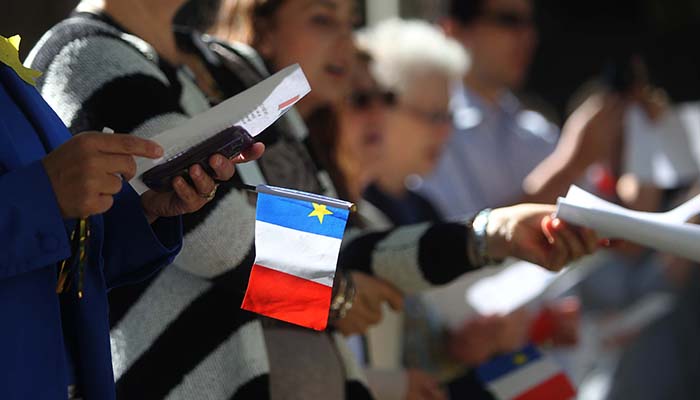A Symbol of Acadian Identity
On August 15, 1884, Bishop Marcel-François Richard presented a flag he had made to the assembled group at the second Acadian National Convention in Miscouche, Prince Edward Island. Consisting of a French flag with a gold star added to the upper left corner, Bishop Richard spoke fervently about his hopes for his creation:
“I wish that the Acadian people could have a flag that reminds them not only that they are the offspring of France, but also one that reminds them of their Acadian-ness [...] through the addition of a star in papal colours to the blue stripe. The star represents Our Lady Mary’s star, the Stella Maris.”
Recognizing the need for Acadians to assert themselves as a distinct people with their own customs, traditions, and dialects, Bishop Richard’s flag was adopted and the very next day, it was flown for the first time in front of the St. John the Baptist Church in Miscouche. Today, 130 years later, the original flag can be found at the Acadian Museum at Université de Moncton, and the design continues to resonate as a symbol of Acadian cultural identity.
In addition to being the 130th anniversary of the Acadian flag, August 15, 2014, also coincides with the fifth World Acadian Congress. Held every five years since 1994, the Congress attracts more than 50,000 visitors from around the world for concerts, performances, family reunions, conferences, seminars, rallies and celebrations. This year’s event will take place from August 8 to 24, in the Acadie des terres et forêts region, which includes parts of northwestern New Brunswick, Maine, and Quebec.
For information about Acadian community activities in Nova Scotia, visit the event calendar prepared by the Fédération acadienne de la Nouvelle-Écosse.


